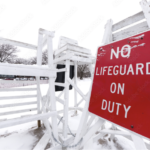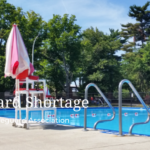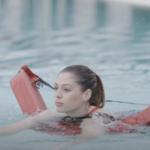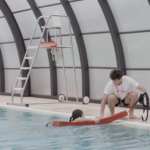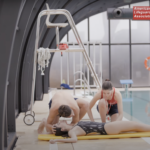In general, professional lifeguards are responsible for the safety of swimmers in their care. This includes monitoring the swimming area for hazards, enforcing safety rules, rescuing swimmers in distress, and providing first aid and CPR if necessary. Professional lifeguards must be able to communicate with both swimmers and other staff members effectively. It involves giving instructions, enforcing pool rules, and maintaining a calm and pleasant demeanor. Finally, professional lifeguards must have strong organizational skills to maintain a safe aquatic environment.
As you can see, the job description of a professional lifeguard is quite demanding. However, it is also an extremely rewarding career choice. If you are passionate about keeping people safe and enjoy working in a fast-paced environment, then a career as a well-trained lifeguard may be the perfect fit for you!
A professional lifeguard is responsible for the safety of swimmers and other patrons at a pool, beach, or another aquatic environment. They enforce rules and regulations to prevent accidents and injuries and provide emergency care in the event of an accident or injury.
Duties of a Professional Lifeguard
The duties of a certified lifeguard vary depending on the location and type of facility where they are working. However, there are some typical duties that all lifeguards must perform. These duties include:
- Enforcing rules and regulations: Professional lifeguards must enforce the rules and regulations of their facility in order to prevent accidents and injuries. They must also be able to identify potential hazards and take steps to mitigate them.
- Providing emergency care: In the event of an accident or injury, professional lifeguards must be able to provide emergency care. This includes first aid and CPR.
- Monitoring patrons: Professional lifeguards must constantly monitor the patrons of their facility in order to identify potential hazards and prevent accidents and injuries.
- Responding to emergencies: In the event of an emergency, professional lifeguards must be able to respond quickly and effectively. They must have a thorough understanding of their facility’s emergency procedures and be able to execute them flawlessly.
Professional lifeguards play a vital role in the safety of those who use aquatic facilities. They must be highly trained and skilled in order to perform their duties effectively.
A professional lifeguard is someone who is responsible for the safety and well-being of others while they are swimming or enjoying other water activities. Lifeguards are typically employed by beaches, pools, waterparks, and other public venues where there is a risk of drowning or other water-related injuries.
In order to be a successful professional lifeguard, one must possess a number of important qualities and skills. First and foremost, a lifeguard must be an excellent swimmer. They should also be in good physical condition, as the job requires them to be on their feet for long periods of time and to perform occasional rescues that may require some physical exertion.
Furthermore, a lifeguard must be able to stay calm in potentially dangerous or chaotic situations. They must be able to think quickly and make decisions that could mean the difference between life and death. They must also be able to communicate clearly and effectively, both in order to give orders and instructions and to reassure those who may be panicked or frightened.
Finally, a professional lifeguard must have a genuine concern for the safety and well-being of others. This quality is perhaps the most important, as it is what drives a lifeguard to do their job to the best of their ability. Without it, a lifeguard would simply be someone who is good at swimming and has some basic first-aid training.
If you possess these qualities and skills, then a career as a professional lifeguard may be the perfect choice for you. And for that, you need lifeguard certification by ALA.
The American Lifeguard Association has been listed over the years with the CDC Healthy Swimming website. In addition, the U.S. Department of Labor and the U.S. General Service Administration (GSA) has determined that the American Lifeguard Association offers lifeguard certification programs similar to those provided by the American Red Cross. Also, since the early 1990s, we have helped ensure that all our lifeguard training programs in all USA states meet Occupational Safety and Health Administration requirements for employees.
The certification program is accomplished through an instructor-led video training program with online materials and a final online exam that lets you get certified right away as an individual or in a small group. The training can be accomplished on your own and at your own pace. Upon completing your online portion of the program, you will be issued a two-year national certification in lifeguarding, CPR/AED, and First Aid. All the training materials, including the videos, will remain available to you throughout your two years of certification so that you can refresh your skills at any time. With this blended program, the employers assess your skills and encourage you to continue practicing the skills through in-service training.
With current national standards, all facilities must establish ways to confirm and maintain adequate skills competency for all lifeguards, including new, returning, seasonal, and current lifeguards. Required certifications and pre-employment tests can be part of that process but do not eliminate the need for on-site orientation and in-service training. By doing so the employers will meet the new U.S. Department of Labor’s OSHA Good Faith Efforts.


